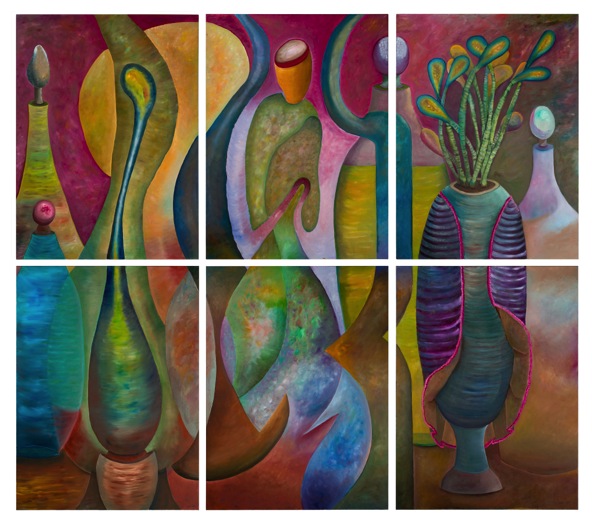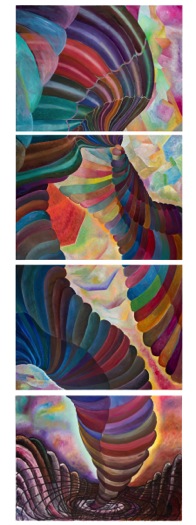Why I Paint
I ’ve always written; stringing words and sentences together has been my way of preserving experience and making it mine since I was in high school. But there was a moment in my forties when words seemed to fail me. My wife and I were standing on a pier in Monterey, California, and I was overcome by the power of the ocean as it pounded the rocks. I tried to capture the moment, but words seemed insufficient to express what I was seeing. They lacked immediacy, and I couldn’t find language that was graphic and visceral enough to reflect what I felt.When I returned home to Boston, I noticed a large “going out of business” sign in the window of the art store across from my office. I’d never entered the art store; never been interested in painting as an activity or a means of expression. But it struck me that perhaps this was no accident. For about $25 I purchased a few brushes, some Russian watercolor paints, and a pad of paper. At the time, I didn’t know the difference between watercolor and oil, and acrylic was just a word that I associated with nail polish.
I began to experiment with color and form. I enjoyed the process of discovery, and because I kne w so little, there was a monumental amount to learn. It didn’t take long for me to realize that I needed help. But my life seemed littered with things started and then abandoned—trumpet and guitar, karate, boxing and skating. I was determined not to let painting be one of those abandoned interests. I decided to paint on my own for three years. If I was still interested after that, I would seek guidance.
w so little, there was a monumental amount to learn. It didn’t take long for me to realize that I needed help. But my life seemed littered with things started and then abandoned—trumpet and guitar, karate, boxing and skating. I was determined not to let painting be one of those abandoned interests. I decided to paint on my own for three years. If I was still interested after that, I would seek guidance.
Three years went by, and although I was still interested, I didn’t feel that I was improving. A good friend suggested kindly that I meet with an artist he knew who was an acknowledged master in the use of color. His name was David
Ratner. Dave took me on and for years we met each Thursday morning. He became my teacher, mentor, therapist. He was already ill when we first met, and I learned only a fraction of what he had to teach before he passed away. But I continue to paint using what he taught me, and with every brushstroke I feel him on my shoulder, telling me to paint with purpose and passion. You’re not applying whitewash, he would say. You’re putting paint on canvas. Be deliberate!
Artistic expression isn’t static; it develops and changes as the artist matures. For me, writing and painting are connected, and the two disciplines inform one another. For example, in studying how to paint, I learned how to see; and it was only when I learned how to see that I discovered how to write visually. They’re also connected because initially they both represented a way of capturing and preserving experience. But that changed. Painting expanded, and it became an exercise in creating space on the canvas. Using colors that were not supposed to go together. Painting one picture on several canvases and incorporating the spaces between canvases into the work.
 Writing, too, has expanded to encompass many things. Delving into family history. Exploring the way people respond when they’re caught up in political and economic events far greater than themselves. Finding out which characters are able to maintain their integrity and which ones are not, and why. Unearthing family secrets and watching the insidious impact they have on my characters and their descendants. Playing with forms that are supposed to be mutually exclusive, like fiction and non-fiction.
Writing, too, has expanded to encompass many things. Delving into family history. Exploring the way people respond when they’re caught up in political and economic events far greater than themselves. Finding out which characters are able to maintain their integrity and which ones are not, and why. Unearthing family secrets and watching the insidious impact they have on my characters and their descendants. Playing with forms that are supposed to be mutually exclusive, like fiction and non-fiction.
So, why do I paint? Why do I write? One might as well ask the amoeba why it evolves. I only know that when I’m doing one, the other always seems easier. And when I’m not doing either, I wish I were doing both. None of it is really important. It’s like breathing—not really a big deal, until you stop.

